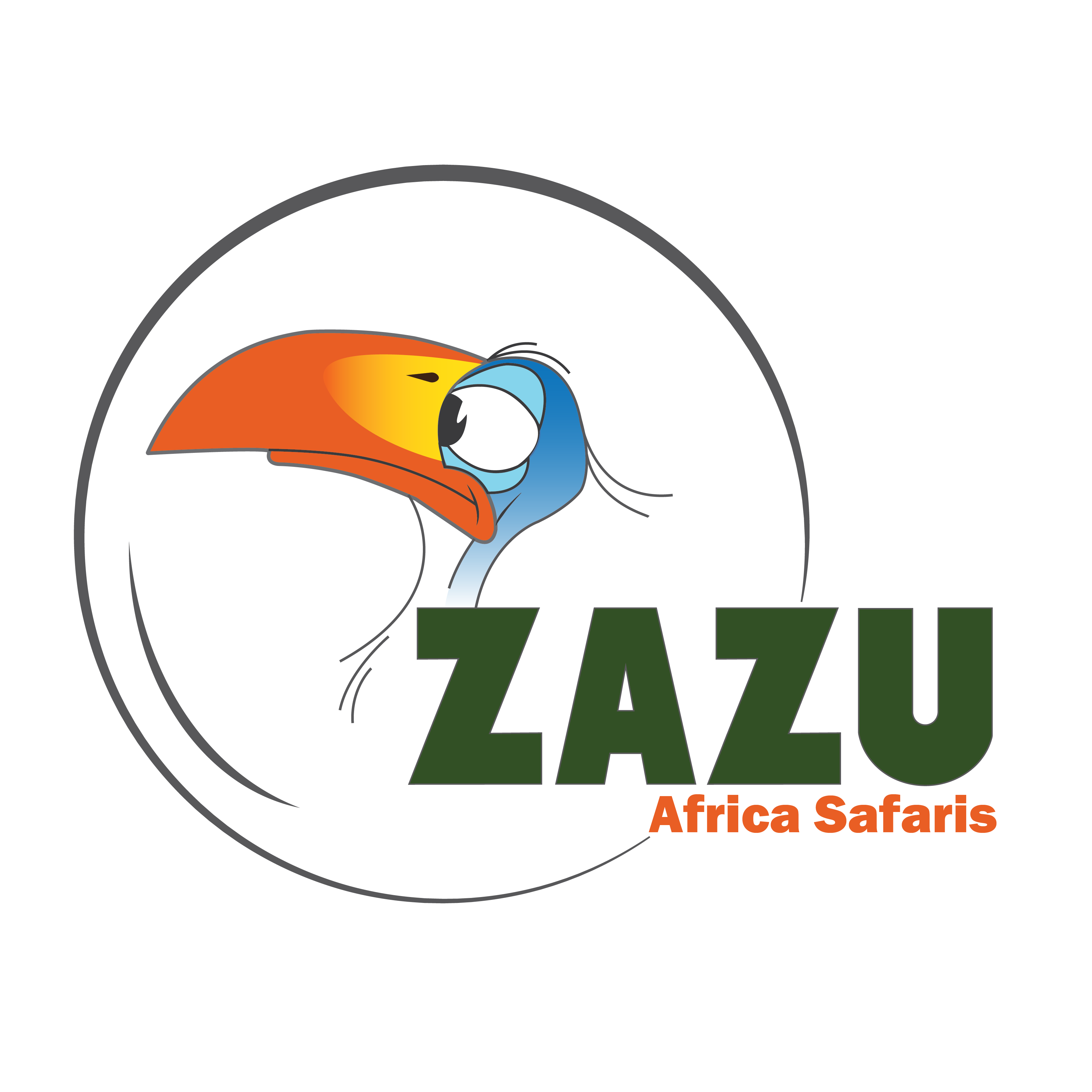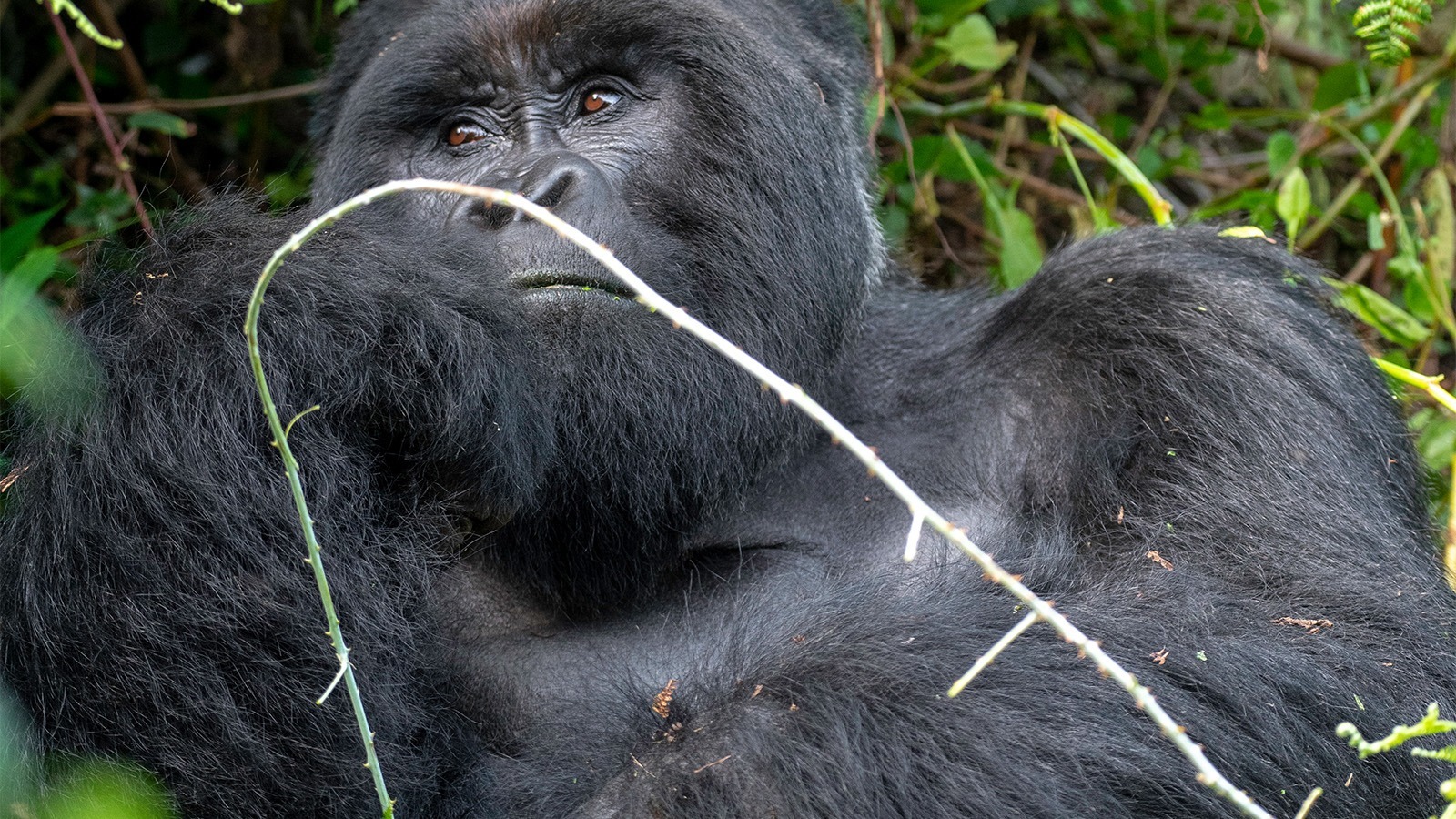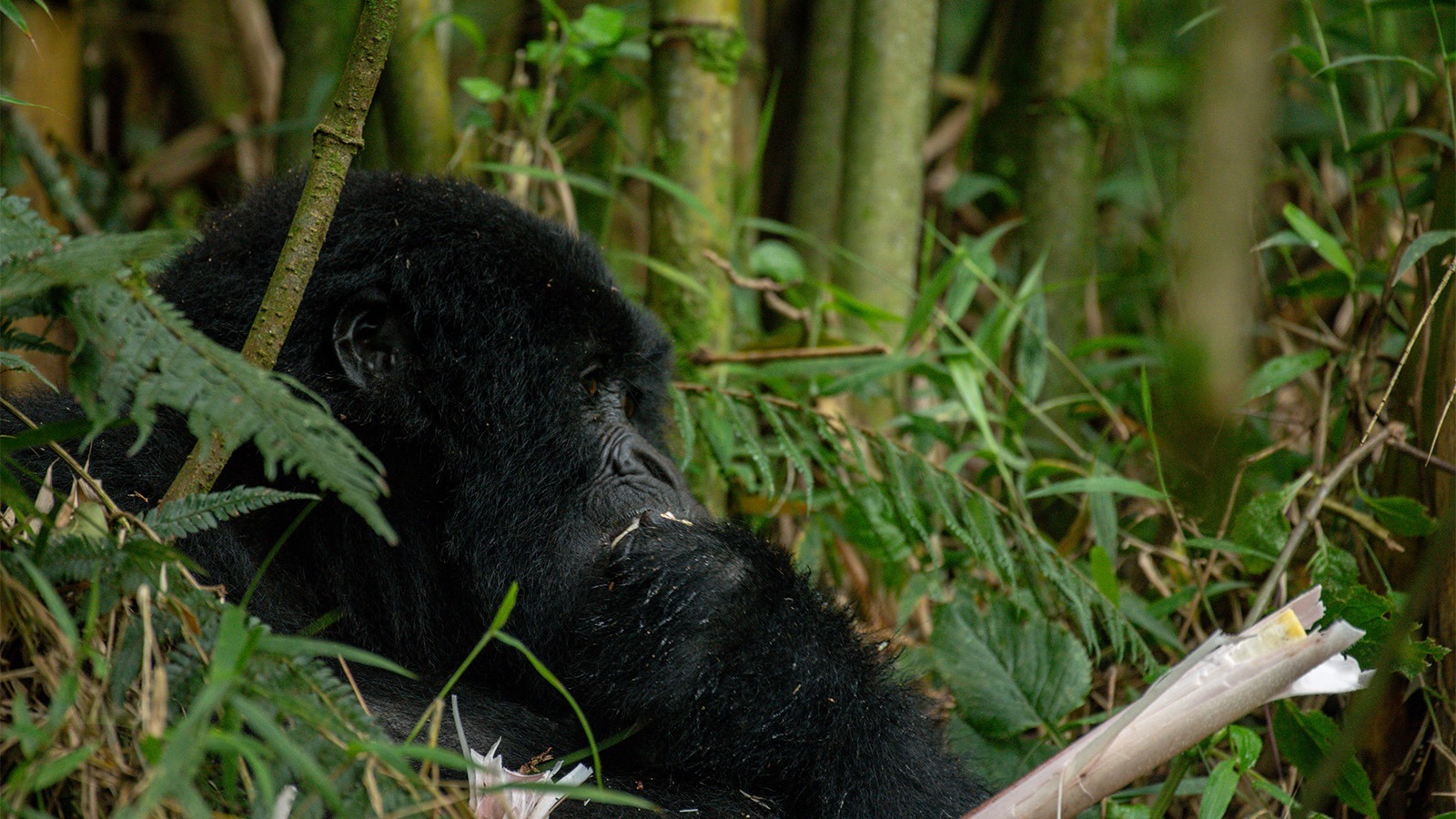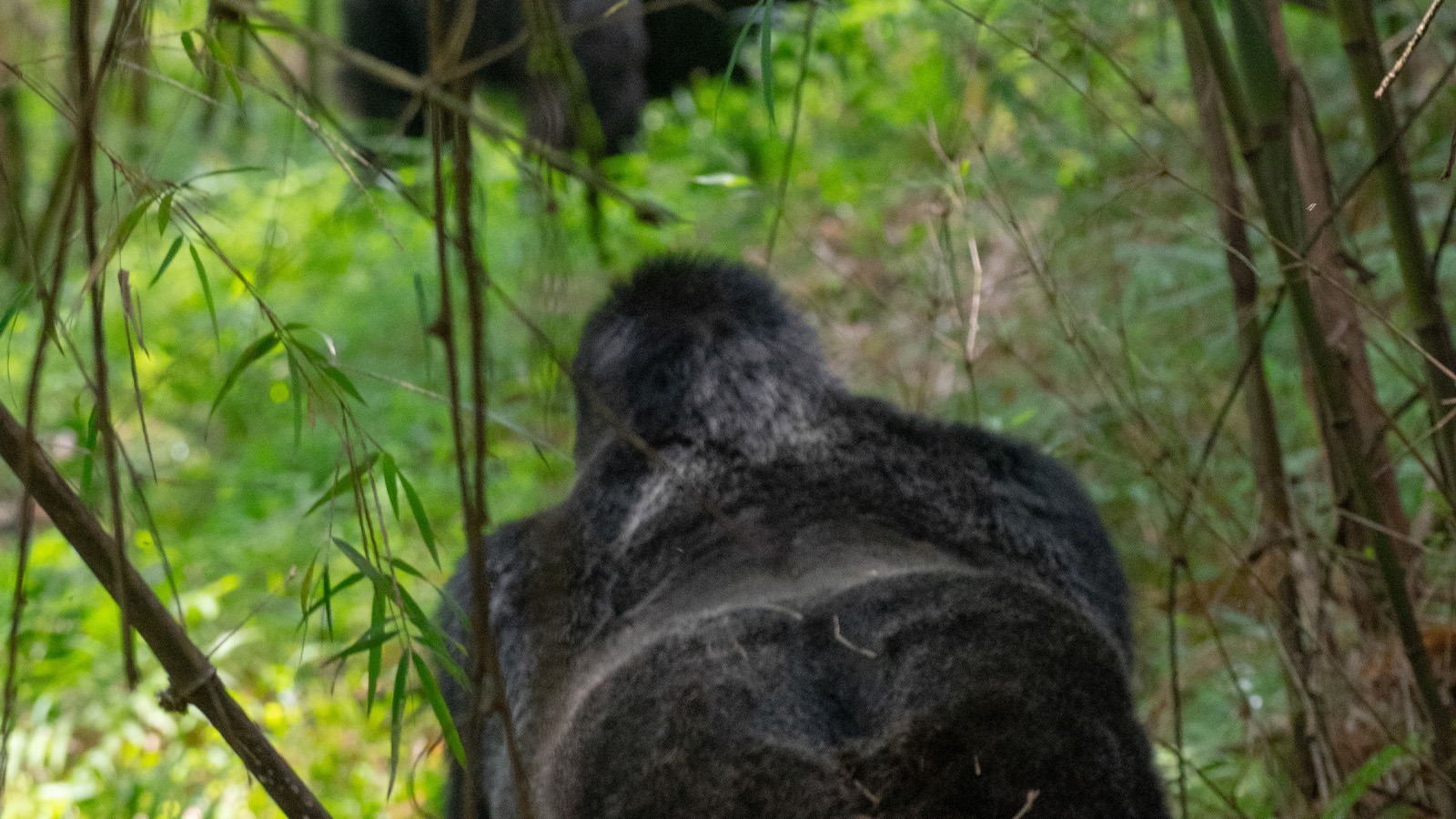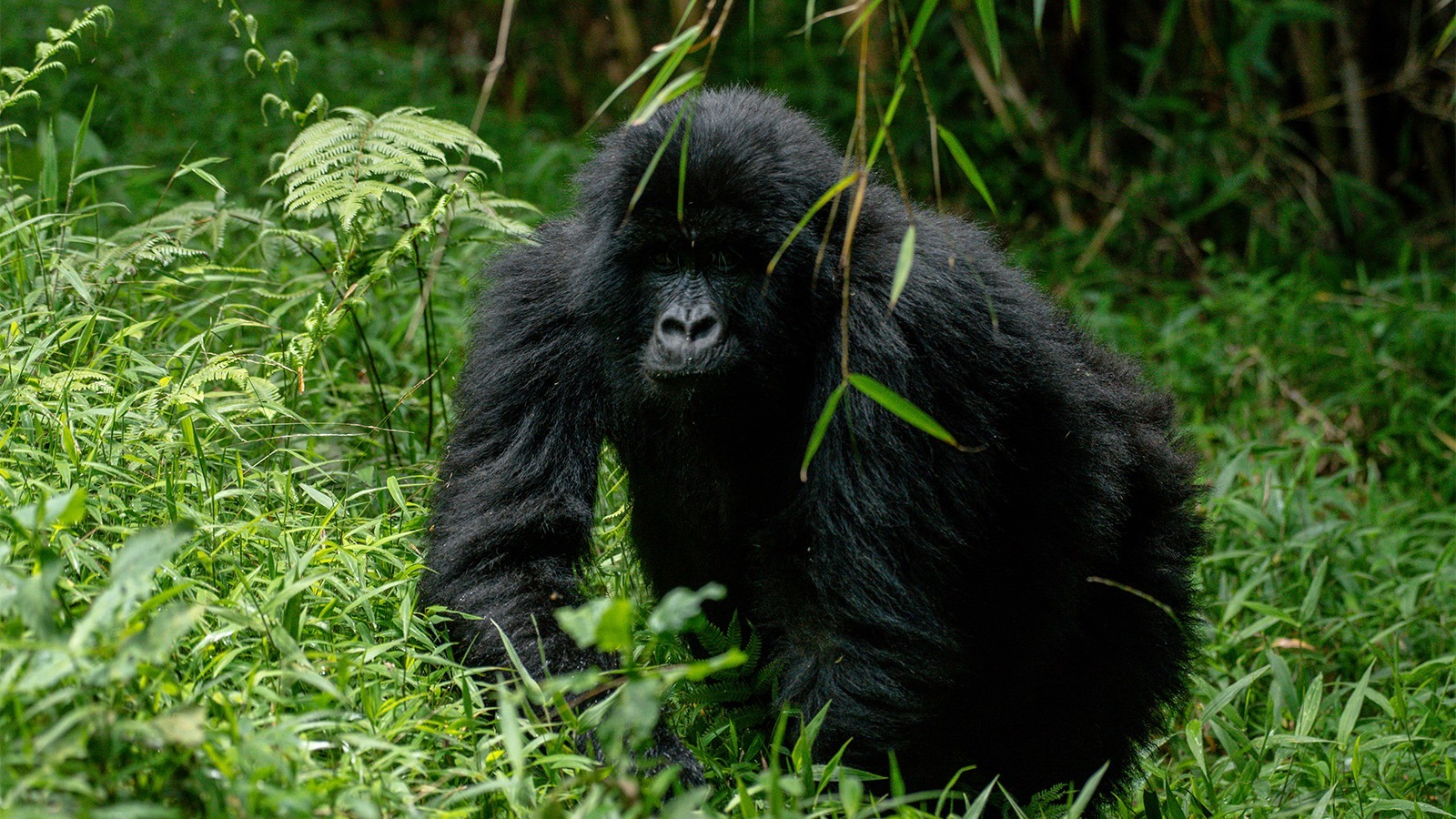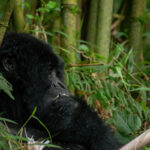What is a Gorilla Permit and Why Do You Need it? Imagine standing just a few feet away from a majestic mountain gorilla in...
How Challenging is Gorilla Trekking in Uganda?
How Challenging is Gorilla Trekking in Uganda. Gorilla trekking in Uganda, particularly in Bwindi Impenetrable Forest, can vary significantly in difficulty due to the constantly moving nature of gorilla families within the rainforest. The challenge level on the day of your trek depends on the gorillas' location, which may require more or less hiking to find them.
The terrain is often steep, unmarked, and rugged, making the trek physically demanding. Weather conditions can also change unexpectedly, adding to the challenge. While some treks may take just a couple of hours, others can last a full day—up to 8 hours or more—through hot, high-altitude environments.
To make the most of your experience, it's essential to prepare adequately. Being physically fit and mentally ready will help you handle the trek’s demands and fully enjoy this incredible adventure. Contact us for more information.
About Gorilla Trekking in Bwindi Impenetrable Forest National Park
Bwindi Impenetrable Forest National Park in Uganda is one of only four national parks in the world that are home to the endangered mountain gorillas. The others include Mgahinga Gorilla National Park in Uganda, Volcanoes National Park in Rwanda, and Virunga National Park in the Democratic Republic of Congo.
Bwindi is one of Africa’s oldest and most biodiverse forests, hosting a wide array of wildlife. This includes 350 bird species, 310 butterfly species,200 tree species, 51 reptile species, 88 moth species, 120 mammal species, including several primates like chimpanzees, L’Hoest’s monkeys, and, most notably, the mountain gorillas.
The global population of mountain gorillas is approximately 1,060 individuals, and nearly half of them are found in Bwindi Impenetrable Forest. The park has over about 20 habituated gorilla family groups available for trekking, with each group allowing a maximum of 8 visitors per day to ensure a sustainable and intimate experience.
Gorilla trekking in Bwindi can vary in difficulty depending on the terrain, weather, and the location of the gorilla families on the day of your trek. The forest's steep and dense terrain makes it both challenging and rewarding, offering an unforgettable opportunity to encounter these magnificent creatures in their natural habitat.
How to Get to Bwindi Forest for Gorilla Trekking
Bwindi Impenetrable Forest can be accessed both by road and by air, depending on your preference and the sector of the park where you’ll be trekking.
By Road
The distance to Bwindi depends on the specific sector you will visit for your gorilla trek:
- Northern Sectors (Ruhija and Buhoma): Accessible via the Kabale-Kisoro highway. Look for Uganda Wildlife Authority (UWA) signposts that guide you to the designated trailhead.
- Southern Sectors (Rushaga and Nkuringo): These can be reached by turning off at Muko along the Kabale-Kisoro highway.
From Entebbe or Kampala, the journey by road takes approximately 8-9 hours. While long, the drive offers scenic views of Uganda's beautiful countryside, including rolling hills, tea plantations, and lakes. You can also access it from Kigali, where you drive for 4 hours from Kigali to Bwindi Impenetrable National Park.
By Air
For a faster option, you can fly to Bwindi using domestic flights:
- To the Southern Sectors (Rushaga and Nkuringo): Fly to Kisoro Airstrip.
- To the Northern Sectors (Ruhija and Buhoma): Fly to Kihihi Airstrip.
Flights can be booked from Entebbe International Airport or Kajjansi Airfield. Domestic airlines such as Aerolink and Fly Uganda operate scheduled and chartered flights to these airstrips.
Upon arrival, you’ll need ground transportation from the airstrip to your lodge, which your tour operator can help organize.
Whether by road or air, reaching Bwindi is part of the adventure and offers a glimpse into Uganda’s diverse landscapes before your unforgettable gorilla trekking experience.
Where is Gorilla Trekking Done in Bwindi Impenetrable Forest National Park?
Gorilla trekking in Bwindi Impenetrable Forest National Park takes place across four distinct sectors: Buhoma, Ruhija, Nkuringo, and Rushaga. Each sector offers unique experiences and is home to habituated mountain gorilla families available for trekking.
Buhoma Sector (Northern Bwindi)
Located in the northern part of the park. It is Conveniently close to Queen Elizabeth National Park, making it easy to combine gorilla trekking with game drives and wildlife viewing. It’s known for its stunning scenery and excellent accommodation options.
Ruhija Sector (Northeastern Bwindi)
Ruhija is found in the northeastern part of the park. It’s near Queen Elizabeth National Park, offering great opportunities to pair your trek with a savanna safari. It’s a quieter and less crowded sector, ideal for those seeking a serene trekking experience.
Rushaga Sector (Southern Bwindi)
This sector is Located in the southern part of the park. It’s Known for having the highest number of habituated gorilla families, making it a popular choice for trekkers. It’s Close to Mgahinga Gorilla National Park, offering options for gorilla trekking and golden monkey tracking.
Nkuringo Sector (Southern Bwindi)
Nkuringo sector is also situated in the southern part of the park. It offers challenging treks due to its steep terrain but rewards trekkers with spectacular views and unique experiences. Its Proximity to Mgahinga Gorilla National Park allows for combined trekking adventures.
Each sector provides a unique experience, but all promise the unforgettable opportunity to encounter mountain gorillas in their natural habitat. Trekking permits are specific to each sector, so it’s important to plan based on your preferences and itinerary. Contact us for bookings.
How Much is Gorilla Trekking in Bwindi Impenetrable Forest National Park?
The cost of gorilla trekking in Bwindi Impenetrable Forest National Park depends on your residency status. Gorilla trekking permits provide an opportunity to spend one hour observing mountain gorillas in their natural habitat once they are located during your trek.
Gorilla Permit Prices
- Foreign Non-Residents: USD 800 per person per trek
- Foreign residents: USD700 per person per trek
- African Citizens: USD 500 per person per trek
- East African Citizens: Ugx300,000 per person per trek
The permit fee covers park entry, guide services, and your one-hour encounter with the gorillas. Booking in advance is highly recommended, as permits are limited to ensure sustainable tourism and minimize the impact on the gorillas' natural environment. Therefore, the Uganda Wildlife Authority sells them on a first come first serve basis.
Where is the Gorilla Habituation Experience Done in Bwindi Impenetrable Forest National Park?
The Gorilla Habituation Experience in Bwindi Impenetrable Forest National Park takes place in the southern region, specifically in the Rushaga sector and areas between Rushaga and Nkuringo sectors.
Key Details about the Gorilla Habituation Experience
- Gorilla habituation involves trekking to find semi-habituated gorilla groups and spending 4 hours with them.
- Participants engage in activities that help mountain gorillas become accustomed to human presence, preparing them for regular trekking in the future.
- Due to the experience's location, it is recommended to stay in lodges in the Rushaga or Nkuringo sectors for convenience.
Permit Information
The Gorilla Habituation Experience is in high demand due to its exclusivity, with only 4 permits issued per day and limited to 4 participants per trek. It is advisable to book permits at least 2-3 months in advance.
- Cost of a Gorilla Habituation Permit:
- Foreign Non-Residents: USD 1,500 per person
- Foreign Residents: USD 1,000 per person
- East African Citizens: Ugx750,000 per person
This unique experience provides a deeper connection with the mountain gorillas, offering extended observation time compared to the standard 1-hour gorilla trek.
What is the Difference Between Gorilla Trekking and Gorilla Habituation Experience in Bwindi?
The main difference between Gorilla Trekking and the Gorilla Habituation Experience in Bwindi Impenetrable Forest National Park lies in the amount of time spent with the gorillas and the group sizes:
Gorilla Trekking
- Time with Gorillas: You spend 1 hour with a fully habituated gorilla family once they are located.
- Group Size: Trekking is done in groups of up to 8 tourists per gorilla family.
- Focus: The experience is primarily about observing the gorillas in their natural habitat, capturing photos, and learning about their behavior from your guide.
- Availability: Available in all four sectors of Bwindi (Buhoma, Ruhija, Nkuringo, and Rushaga).
Gorilla Habituation Experience
- Time with Gorillas: You spend 4 hours with a semi-habituated gorilla family that is still undergoing habituation (training to get used to human presence).
- Group Size: Limited to 4 tourists per gorilla family, ensuring a more exclusive and immersive experience.
- Focus: Participants engage in activities that help researchers and trackers habituate the gorillas, such as observing their behavior and taking notes.
- Availability: Only offered in the Rushaga sector and areas between Rushaga and Nkuringo.
- Permit Costs: Gorilla habituation permits are more expensive than trekking permits due to the extended time and exclusive nature of the experience.
Physical Demand
Both activities require a good level of fitness, as trekking through Bwindi’s steep and dense forest terrain can be strenuous. The difficulty level varies depending on the location of the gorilla families and weather conditions.
In summary, gorilla trekking is ideal for a shorter, focused wildlife experience, while the habituation experience is perfect for those who want a deeper, more involved interaction with the gorillas.
Best Time to Go Gorilla Trekking in Bwindi Forest
The best time for gorilla trekking in Bwindi Impenetrable Forest National Park is during the drier months of January, February, June, July, August, and early September. These months offer better trekking conditions, as the trails are less muddy and slippery, and the vegetation is less overgrown, providing clearer views of the gorillas.
What to Pack for Gorilla Trekking in Bwindi Forest
Gorilla trekking requires preparation due to the challenging terrain and unpredictable weather. Here’s a suggested packing list:
- Insect Repellent
- Torch/Flashlight (and spare batteries)
- Wet Wipes
- Water Bottle
- Camera and Lenses
- Comfortable Hiking Boots and Socks
- Gardening Gloves (for support while grabbing vegetation)
- Sandals/Walking Shoes (for after the trek)
- Long-Sleeve Cotton Shirt and Lightweight Long Trousers (for protection from nettles and insects)
- Hat and Sunscreen
- Rain Jacket (as it can rain unexpectedly)
- Sweater/Fleece (for cooler temperatures)
- Swimwear (optional for lodges with pools)
- Binoculars (for bird and wildlife watching)
Where to Stay During Gorilla Trekking in Bwindi Forest
Accommodation options depend on the sector where your trek is scheduled:
- Northern Bwindi (Buhoma and Ruhija Sectors):
- Buhoma: Buhoma Lodge, Bwindi Lodge, Buhoma Community Rest Camp, Ride 4 a Woman
- Ruhija: Trekkers Tavern Cottages, Agandi Eco Lodge, Gift of Nature Lodge, Ruhija Gorilla Safari Lodge, Broadbill Tented Camp
- Southern Bwindi (Rushaga and Nkuringo Sectors):
- Rushaga: Rushaga Gorilla Camp, Four Gorillas Lodge, Gorilla Safari Lodge, Gorilla Valley Lodge, Karungi Camp
- Nkuringo: Nkuringo Bwindi Gorilla Lodge, Clouds Mountain Gorilla Lodge, Lake Mutanda Resort
These lodges are strategically located near the trekking start points for convenience.
Which Sector is Best for Gorilla Trekking in Bwindi Forest?
- Rushaga Sector: Known for having the most habituated gorilla families, making permits more accessible.
- Buhoma Sector: Offers shorter and less strenuous treks; many visitors complete their trek by mid-morning.
- Nkuringo Sector: Known for its higher elevation and more strenuous treks but offers stunning views.
- Ruhija Sector: Offers a quieter experience and beautiful forest landscapes.
Regardless of the sector, the chances of seeing gorillas are approximately 99%, thanks to the excellent organization of the activity. Contact our team for more information.
